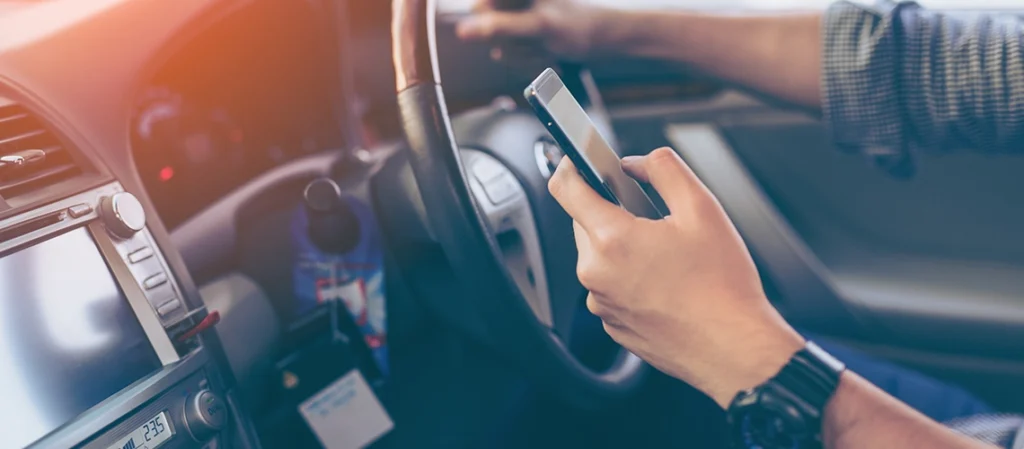The use of cell phones while driving on the road has become an issue that is pervasive in this age of technology.
This is due to our desire to stay connected as well as our ability to access information quickly.
Distracted driving has increased alarmingly. This session explore cell phones safety, consequences, and responsible usage of mobile phones behind the wheel.
1. The Use of Cellphones:
Mobile phones are a part of everyday life and they have spread to the roads. Drivers use mobile devices to make phone calls, send text messages, and even download apps while in a car. This behavior is widespread, but it poses major risks to both the driver and other drivers on the road.
2. Three types of distracted driving are caused by cell phones:
Cognitive, manual, and visual. The driver’s eyes are diverted from the road when they look down at their mobile phone. The driver must take their hands off of the wheel to physically interact with the phone. The driver is distracted from the road by a phone conversation or any other activity. These distractions increase the risk of an accident exponentially.

3. Texting and driving.
Texting is the worst form of distracted driving. While composing or reading text, attention is diverted from the road. This increases the chance of an accident. In terms of impairment caused by texting, studies consistently demonstrate that driving while distracted is the same as driving drunk.
4. Cell phone use increases accident risk.
This correlation is well established. The use of cell phones while driving has been identified by many as the leading cause of accidents, injuries, and fatalities. In addition to the increased risk of accidents, cell phone use can also lead to impaired judgment and a slower reaction time.
5. Legal Consequences:
Many jurisdictions are enforcing strict penalties and laws because they recognize the dangers of using a cell phone while driving. The penalties for breaking these laws include fines and license points. In some cases, license suspension is also possible. These legal penalties highlight society’s commitment to eliminating distracted driving.
6. Initiatives for Education:
The efforts to reduce cell phone usage in the car go beyond legal restrictions. The educational initiatives that are undertaken play an important role in spreading awareness of the dangers of driving while distracted. Schools, driver’s education programs, and public awareness campaigns aim to make people aware of the dangers associated with using a cell phone while driving.
7. The latest technological advances
It also presents potential solutions to cell phone usage while driving. Manufacturers of smartphones and developers of apps have created features and applications that discourage and prevent the use or abuse by drivers. There are auto-reply modes, do-not-disturb settings, or even apps that block specific functions when the phone detects that it is moving. Although these technologies are very promising, the effectiveness of their solutions depends on how well users adopt and adhere to them.
8. The impact on mental health: Cellphone use can be detrimental to the mind, even if it is not physically dangerous. People may use their cell phones while driving because of the need to always be in touch and to avoid missing out. However, this constant connectivity can be detrimental to your mental well-being, since the stress of having to react instantly may cause anxiety.
9. The influence of parents and the workplace: Parents and employers both play a pivotal role in combating cell phone usage while driving. Parental influence: Parents should set an example by demonstrating safe driving practices and dissuading their children from using phones while driving. The employers, however, should implement policies that discourage or even prohibit the use of phones while driving. This will foster a culture that encourages responsible behavior among their staff.
10. To tackle the problem of driving while using a cell phone, it is crucial that we change public perception. To create a culture where distracted driving will be universally condemned, it is important to foster a sense of social responsibility in communities. The influence of peers, community initiatives, and social norms all have a role to play in influencing attitudes toward responsible cell phone usage on the roads.
Conclusion
Using a cell phone while driving has far-reaching and multi-faceted consequences. The issue of cell phone use while driving is complex, with many facets. From increased accident risk to the legal implications of mental health issues, it requires an integrated and collaborative effort. To reduce the risks associated with using a cell phone while driving, we must promote awareness and implement technological solutions. Enforcing law enforcement as well as fostering social responsibility will also help. In the end, the road to safer streets begins when individuals commit to putting safety ahead of the urge to be connected behind the wheel.
